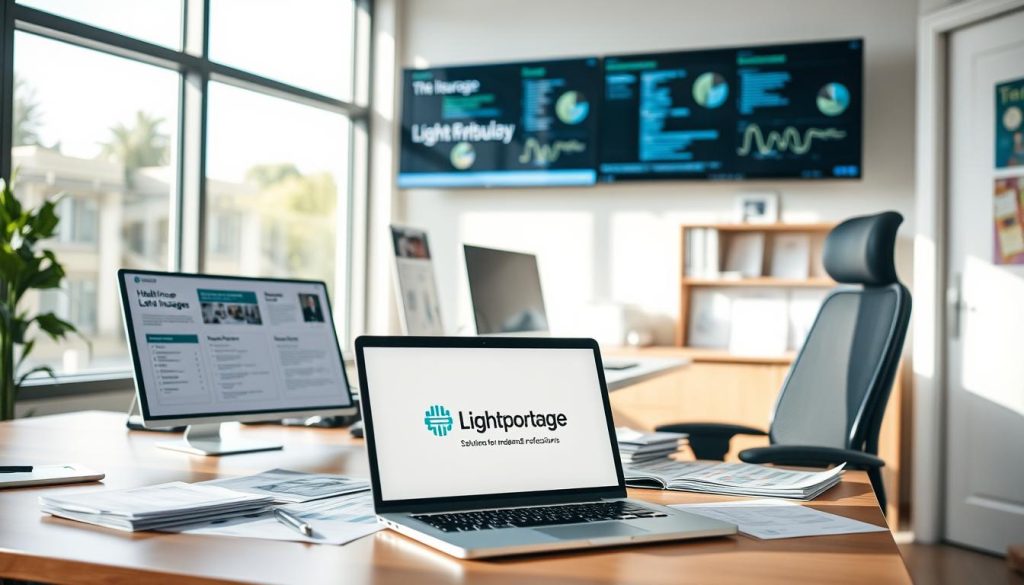Imagine waking up every morning to build a career you love—one where you set the rules. The freedom of self-employment is exhilarating, but let’s be honest: it’s not without its challenges. Income swings, tax complexities, and navigating safety nets alone can feel overwhelming. What if you had a roadmap to turn uncertainty into confidence?
This guide is designed for independent professionals like you. Whether you’re a consultant, freelancer, or small business owner, understanding how to protect your income and plan for the unexpected is critical. For instance, did you know 29% of self-employed workers prioritize autonomy but still seek stability? We’ll show you how to balance both.
Taxes play a major role in financial planning. With a 15.3% self-employment tax rate, knowing how to calculate deductions or quarterly payments can save thousands annually. We’ll break down what percentages apply to your unique situation and how to report earnings accurately.
Beyond taxes, options like unemployment insurance or private coverage exist to safeguard your livelihood. Requirements vary—some programs ask for proof of consistent activity over months or years—but we simplify the criteria so you can focus on growing your business.
Table of Contents
Key Takeaways
- Learn eligibility rules for unemployment support and lump-sum allowances.
- Understand how fluctuating income impacts tax obligations and deductions.
- Discover activity duration requirements (years/months) to qualify for benefits.
- Compare public insurance programs with private coverage alternatives.
- Master strategies to maintain accurate income reports for optimal financial planning.
Understanding the Self-Employed Landscape in France
Independent professionals in France face unique rules when accessing financial safety nets. To qualify for unemployment support, you must meet strict work duration requirements and income thresholds. Let’s explore what this means for your career.
Exploring Eligibility for Unemployment Insurance
France’s unemployment system requires at least 24 months of continuous activity for most applicants. Your annual earnings must exceed €10,000 after business expenses. Registration with France Travail is mandatory—this agency verifies your work history and resources.
Key conditions include:
- Proof of active status for 2 consecutive years
- Personal resources capped at €16,423 annually (2024)
- Documentation like tax returns and client contracts
Recognizing Tax Deductions and Business Expenses
Tax rules allow significant reductions based on your field. Commercial activities get a 71% abatement, while liberal professions receive 34%. These percentages directly lower your taxable income.
| Activity Type | Abatement % | Example Deductions |
|---|---|---|
| Commercial | 71% | Office rent, marketing |
| Artisanal | 50% | Materials, equipment |
| Liberal | 34% | Software, training |
Track every expense—even small purchases add up. A €500 laptop could save you €170 in taxes under commercial rates. Proper record-keeping turns daily costs into strategic resources for financial stability.
Essential Self-Employed Benefits for Modern Freelancers
Navigating financial support systems can feel like solving a puzzle with missing pieces. Let’s simplify the framework that safeguards your career during unexpected gaps.
Eligibility Criteria for Unemployment Benefits
Accessing support requires meeting three core conditions. First, you must demonstrate 24 months of continuous activity within France’s formal business registry. Second, your annual income business—calculated as turnover minus tax deductions—needs to exceed €10,000. Third, you must prove involuntary work cessation through documents like client termination letters.
- Minimum operational period: 2 years
- Income verification via recent tax returns
- Mandatory registration with URSSAF
Allowance Calculation and Reduction Guidelines
Your daily allowance starts at €26.30 for 182 days. However, this adjusts if your average monthly taxable income falls below €1,200. For example:
| Scenario | Daily Rate | Duration |
|---|---|---|
| Full entitlement | €26.30 | 182 days |
| Reduced earnings | €19.73 | Up to 548 days |
Key factors influencing adjustments:
- Previous year’s declared profits
- Business expenses impacting tax deductions
- Regional cost-of-living indexes
Submitting a declaration of cessation and six months of bank statements accelerates approval. Remember: Benefits hinge on accurate income reports—discrepancies delay payments.
Navigating Health Insurance Options for the Self-Employed

How do you choose between affordability and flexibility when securing health coverage? France’s system offers multiple pathways tailored to independent professionals. Let’s simplify your choices with actionable insights.
Marketplace Plans vs. Private Coverage
Public Marketplace plans provide standardized options regulated by social security. These often feature lower premiums but limit provider networks. Private alternatives offer broader access to specialists—ideal if you travel frequently or prefer specific hospitals.
| Plan Type | Avg. Cost/Year | Key Advantage |
|---|---|---|
| HMO | €2,100 | Low out-of-pocket costs |
| PPO | €3,400 | No referrals needed |
| HDHP+HSA | €1,800 | Tax-free savings account |
Consider deductibles: A €3,000 HDHP may save €600/year in taxes through HSA contributions. Private plans may also include dental or vision coverage at added cost.
Customizing Your Healthcare Plan to Fit Your Needs
Start by assessing your medical history and budget. Ask:
- Do you need frequent prescriptions or specialist visits?
- Could a Health Savings Account offset unexpected costs?
- Does your corporation structure allow employer-sponsored plans?
For low-income earners, Medicaid provides subsidized care—eligibility requires proof of earnings below €16,000/year. Always compare renewal terms: some insurers raise rates 8-12% annually.
Pro tip: Bundle life insurance with health coverage for multi-policy discounts. Update your plan each open enrollment period to match changing needs.
Building a Robust Retirement Savings Strategy

For independent professionals, retirement planning is less about luck and more about strategic choices. With fluctuating income and variable work activity, selecting the right accounts ensures long-term stability. Let’s explore tools designed to grow your savings while adapting to your career’s unique rhythm.
Tailoring Retirement Accounts to Your Workflow
Traditional IRAs offer tax deductions now, while Roth IRAs provide tax-free withdrawals later. SEP IRAs let you contribute up to 25% of net earnings (€66,000 cap in 2024). Solo 401(k)s add flexibility: €22,500 employee contributions plus 25% employer matches.
| Account Type | Max Contribution | Catch-Up (50+) | Tax Treatment |
|---|---|---|---|
| SEP IRA | 25% of income | N/A | Pre-tax |
| Solo 401(k) | €66,000 total | €7,500 | Pre-tax/Roth |
SEP IRA vs. Solo 401(k): Key Differences
SEP IRAs work best for consistent earners—contributions scale with profits. Solo 401(k)s suit those wanting to save aggressively, especially with family employees. Example: A €90,000 income allows €22,500 employee + €18,750 employer contributions in a Solo 401(k).
Securing Your Financial Future
Start by automating monthly transfers—even €200/day adds up. Review accounts annually, adjusting contributions during high-income activity periods. Combine retirement savings with emergency funds for full financial armor.
DIY Paid Time Off and Slow Season Planning
Creating your own safety net for time off requires precision. Unlike traditional employment, you determine how many days you can afford—both financially and operationally. Start by calculating your ideal number of vacation days while ensuring business continuity.
Calculating Your PTO Requirements
First, divide your monthly income goal by workdays. For example:
- €5,000 target ÷ 20 days = €250/day rate
- 5 planned days off = €1,250 to save monthly
Factor in costs like client pauses or subcontractor fees. A half-day absence (€125) needs separate budgeting. Track these metrics in spreadsheets or apps like Toggl.
| Time Off Type | Daily Allowance | Monthly Savings |
|---|---|---|
| Vacation | €250 | €1,250 |
| Sick Leave | €125 | €625 |
Funding Strategies for Active and Passive PTO Funds
Automate contributions matching your income flow:
- Active: Transfer 8% of each invoice to a dedicated account
- Passive: Use micro-savings apps (Plum, Qapital) rounding up card purchases
One freelancer accumulated €2,100/year by saving €4.50 daily. During slow months, tap these reserves instead of credit cards. Pair with loyalty programs—some travel cards offer 1.5x points on everyday purchases to subsidize breaks.
« Treat time off as a non-negotiable business expense. Your mental reset fuels long-term productivity. »
Leveraging Government Resources: Universal Credit and Tax Deductions
Managing irregular cash flow while complying with regulations can feel like walking a tightrope. Government programs like Universal Credit offer a safety net, but unlocking support requires strategic documentation and awareness of key thresholds.
Reporting Income, Expenses, and Business Assets
Accurate reporting starts with tracking three elements:
- Monthly income: Use bank statements and client invoices
- Business costs: Software subscriptions, travel, and equipment
- Asset values: Tools or vehicles used for work
Create a simple spreadsheet or use apps like QuickBooks Self-Employed. For example, a €1,200 laptop purchase becomes a €408 tax deduction at 34% commercial rates.
| Expense Category | Deductible % | Annual Impact (€5k Expenses) |
|---|---|---|
| Office Supplies | 100% | €5,000 reduction |
| Vehicle Use | 50% | €2,500 reduction |
| Professional Training | 75% | €3,750 reduction |
Meeting Universal Credit Requirements and the Minimum Income Floor
The government assumes you earn at least €1,398/month (2024 floor) unless proven otherwise. If your profits fall below this, you may qualify for partial support. Prepare:
- 6 months of profit/loss statements
- Proof of active client outreach
- Business development plans
Example: A freelance designer earning €1,100/month could receive €298 in Universal Credit. Update your situation quarterly—delayed reports risk benefit suspensions.
Conclusion
What separates thriving independent professionals from those constantly battling uncertainty? Strategic planning across every financial layer we’ve explored. From decoding eligibility criteria to optimizing retirement accounts, each choice strengthens your career’s foundation.
Remember: France’s support systems reward preparation. Meeting 24-month activity requirements or mastering income verification processes transforms vague hopes into actionable plans. Tax deductions become tools rather than burdens when aligned with your business structure.
Your next steps? Revisit sections detailing healthcare customization and Universal Credit thresholds. Compare public programs with private alternatives using the calculation frameworks provided. Small adjustments—like automating savings or documenting expenses—compound into lasting stability.
We’ve mapped the terrain. Now it’s your turn to walk the path. Whether securing financial safety nets or refining quarterly tax strategies, every decision moves you closer to peace of mind. Ready to dive deeper? Explore our detailed guides to turn today’s insights into tomorrow’s security.
FAQ
How does unemployment insurance work for freelancers in France?
Independent workers can access unemployment benefits through URSSAF after closing their business, provided they’ve paid social charges for at least 12 months. Benefits typically cover 57% of prior taxable income for up to 6 months.
What business expenses qualify for tax deductions?
Deductible costs include office supplies, professional tools, software subscriptions, and up to 50% of home office expenses. Keep receipts for 3 years and use tools like QuickBooks or Wave to track deductible items.
Can I combine a Roth IRA with a SEP retirement plan?
Yes. Many professionals use SEP IRAs for employer-side contributions (up to 25% of net earnings) while maintaining personal Roth IRAs for tax-free growth. Vanguard and Fidelity offer both account types with low fees.
How does the UK’s Minimum Income Floor affect Universal Credit claims?
If monthly earnings fall below 15 hours × National Living Wage (£1,334 in 2024), the DWP uses this floor amount to calculate benefits. Track income using HMRC’s Making Tax Digital tools to maintain compliance.
What’s the difference between active and passive PTO funds?
Active funds use current income (e.g., setting aside 8% per project), while passive funds grow through investments like Acorns round-ups or dividend stocks. Aim for 4-6 weeks’ coverage for seasonal slowdowns.
Are health premiums deductible for independent contractors?
Yes. Marketplace plan premiums (Silver tier averages 0/month) and out-of-pocket costs qualify for deductions. Compare options through Healthcare.gov or private brokers like eHealth.





